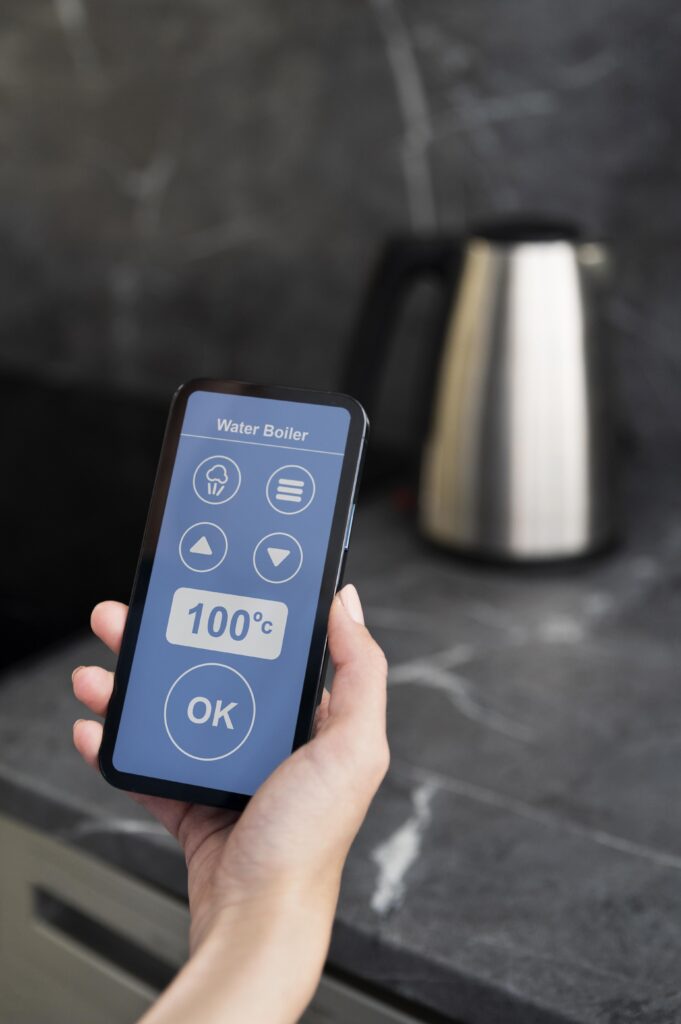Introduction
Smart thermostats are revolutionizing how we manage indoor comfort, combining energy efficiency with convenience. These energy-efficient gadgets offer numerous benefits, such as reducing energy consumption, lowering utility bills, and enhancing home comfort. By learning your habits and optimizing heating and cooling schedules, smart thermostats help you save money while maintaining the perfect temperature. With features like remote control, energy usage reports, and integration with smart home devices, these innovative tools are a must-have for modern, eco-conscious homeowners. Let’s explore how smart thermostats deliver remarkable savings and unmatched convenience.
Smart Thermostats Benefits: Why They’re a Must-Have for Your Home

Smart thermostats bring a wealth of advantages to your home, offering convenience, efficiency, and cost savings. These smart devices adapt to your lifestyle, learning your schedule and preferences to automatically adjust temperatures for maximum energy efficiency and comfort.
What Are Smart Thermostats?
Smart thermostats are advanced devices that allow you to control your home’s heating and cooling systems via a smartphone app, voice command, or web interface. Unlike conventional thermostats, these advanced devices leverage sensors, smart algorithms, and Wi-Fi connectivity to learn your habits and adjust settings automatically for optimal comfort.
Key Features of Smart Thermostats
- Learning Capabilities: Devices like Nest Thermostats adapt to your habits, creating schedules based on your routines.
- Remote Control: Control your home’s temperature remotely with ease using a dedicated app, ensuring comfort and energy savings no matter where you are.
- Energy Reports: Detailed reports show energy consumption patterns, helping you make informed decisions.
- Integration with Smart Homes: Connect with devices like Amazon Alexa, Google Assistant, and smart lights for a seamless experience.
How Smart Thermostats Save Energy
Smart thermostats are designed to maximize efficiency and minimize waste. Here’s how they help you save energy:
1. Automated Temperature Adjustments
Smart thermostats intelligently adapt to your home’s occupancy and activity, optimizing temperature settings for maximum comfort and energy efficiency. For example:
- Lowering the temperature when you’re asleep or away.
- Increasing comfort settings when you’re home and active.
2. Energy-Saving Modes
Most smart thermostats include energy-saving modes that optimize temperature settings for maximum efficiency.
3. Zoned Heating and Cooling
Advanced models allow for zone-specific adjustments, ensuring that only the areas being used are heated or cooled.
4. Real-Time Energy Monitoring
Smart thermostats analyze your energy usage patterns and offer actionable insights, helping you optimize settings and reduce energy consumption effectively.
5. Weather Adaptation
By syncing with local weather forecasts, smart thermostats adjust settings to account for temperature fluctuations.
Benefits of Smart Thermostats
Switching to a smart thermostat comes with numerous benefits beyond energy savings.
Lower Energy Bills
Studies show that smart thermostats can reduce energy bills by 10-20% annually. Automated settings and energy-saving recommendations contribute to these savings.
Improved Comfort
Smart thermostats ensure a consistently comfortable environment by adjusting the temperature based on your schedule and preferences.
Convenience
Remote control and voice-command features allow you to manage your thermostat effortlessly, even when you’re not home.
Top Smart Thermostats for 2025
Here are some of the best smart thermostats available, offering advanced features and excellent energy savings.
1. Google Nest Learning Thermostat
- Features: Adaptive learning, remote control, energy reports.
- Best For: Homeowners looking for a self-programming thermostat.
- Energy Savings: Reduces heating and cooling bills by up to 15%.
2. Ecobee SmartThermostat with Voice Control
- Features: Integrated Alexa, occupancy sensors, energy reports.
- Best For: Tech enthusiasts wanting voice control and detailed insights.
- Energy Savings: Provides room-specific temperature optimization.
3. Honeywell Home T9
- Features: Smart room sensors, geofencing technology, app integration.
- Best For: Larger homes needing room-specific comfort settings.
- Energy Savings: Geofencing ensures energy is only used when needed.
How to Choose the Right Smart Thermostat
When selecting a smart thermostat, consider these factors:
Compatibility
Ensure the thermostat works with your existing HVAC system. Certain smart thermostat systems may need a common wire (C-wire) for a consistent power supply, ensuring seamless functionality and advanced features.
Integration
Choose a device that integrates seamlessly with your smart home ecosystem, such as Alexa, Google Assistant, or Apple HomeKit.
Ease of Use
Look for an intuitive app interface and simple setup process.
Additional Features
- Geofencing: Adjusts settings based on your location.
- Humidity Control: Maintains optimal indoor air quality.
- Multi-Zone Support: Provides customized comfort for different areas.
Installing and Setting Up a Smart Thermostat
Installing a smart thermostat is typically simple and hassle-free provided your HVAC system supports it. Most devices come with step-by-step instructions or app guidance. Here’s a quick overview:
Turn Off Power
Switch off your HVAC system to ensure safety during installation.
Remove Old Thermostat
Carefully remove the existing thermostat, labeling wires for easy identification.
Mount the Smart Thermostat
Follow the manufacturer’s instructions to install the base and connect the wires.
Power Up and Configure
Turn on the power and use the app to configure settings and connect to Wi-Fi.
Customize Settings
Set schedules, preferences, and energy-saving modes for optimal performance.
Maximizing Energy Savings with Your Smart Thermostat
Maximize your smart thermostat’s efficiency by setting schedules, enabling geofencing, and integrating it with other smart home devices for seamless automation.
Set Realistic Schedules
Program temperature settings that align with your daily routine.
Enable Geofencing
Activate location-based adjustments to avoid wasting energy when you’re away.
Utilize Energy Reports
Review detailed reports to identify trends and opportunities for savings.
Pair with Smart Sensors
Use additional sensors to monitor temperature and occupancy in different rooms.
Regularly Update Firmware
Ensure your smart thermostat stays updated with the latest firmware to unlock new features, enhance performance, and maintain compatibility with evolving smart home ecosystems.
Challenges and Solutions
While smart thermostats offer many benefits, there are some challenges to consider:
Initial Cost
Smart thermostats can be expensive upfront. However, energy savings typically offset the cost within 1-2 years.
Conclusion
Smart thermostats are a powerful tool for reducing energy consumption and lowering utility bills. By automating temperature adjustments, providing real-time insights, and integrating with smart home systems, these devices enhance comfort and efficiency. Whether you’re looking to save money, improve convenience, or adopt a more eco-friendly lifestyle, a smart thermostat is a worthwhile investment for any modern home.














